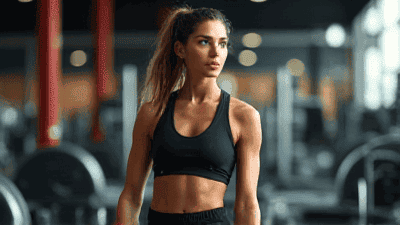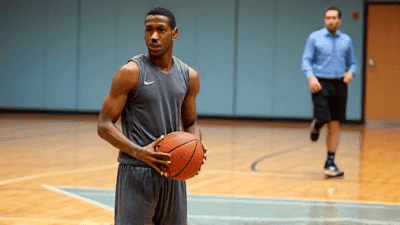
As sports continue to captivate audiences around the world, the influence of professional athletes extends beyond their competitions into the realm of fitness and wellness. Athletes are often seen as the epitome of strength, endurance, and determination, creating a powerful allure for fans and fitness enthusiasts alike. From innovative training techniques to unique nutrition plans, the fitness trends inspired by athletes have shaped how individuals approach their own health and well-being.
The Influence of Athletes on Fitness Culture
Role Models and Inspiration
Professional athletes serve as role models for many aspiring fitness enthusiasts. Their dedication, discipline, and commitment to achieving peak performance inspire individuals of all backgrounds to elevate their fitness levels. By showcasing their training regimens, dietary habits, and overall lifestyles, athletes promote a culture of health and fitness that encourages fans to emulate their practices.
Social Media and Visibility
The rise of social media platforms has amplified athletes' reach, allowing fans to gain insights into their daily lives. Athletes frequently share their workout routines, meal plans, and recovery methods online, creating an intimate connection with followers. This transparency enables individuals to adopt various fitness trends inspired by their favorite athletes, making them feel more accessible and relatable.
High-Intensity Interval Training (HIIT)

The Concept of HIIT
One of the most popular fitness trends inspired by professional athletes is High-Intensity Interval Training, or HIIT. This training method alternates short bursts of intense exercise with periods of lower-intensity recovery or rest. Athletes across various sports employ HIIT techniques to optimize their conditioning and improve their overall performance.
Benefits for the Average Person
HIIT offers numerous benefits for individuals looking to enhance their fitness levels:
Time Efficiency: HIIT workouts can be completed in significantly less time compared to traditional steady-state cardio sessions, making it a great option for those with busy schedules.
Caloric Burn: The intense nature of HIIT increases post-exercise oxygen consumption, leading to greater calorie burns even after the workout is finished.
Customization: HIIT routines can be tailored to suit different fitness levels, making it accessible to beginners and advanced athletes alike.
Implementation Tips
To incorporate HIIT into your fitness routine, consider the following tips:
- Start with shorter intervals, gradually increasing intensity and duration as your fitness improves.
- Include a mix of bodyweight exercises, cardiovascular activities, and resistance training for balanced workouts.
- Ensure proper warm-up and cool-down to prevent injuries and aid recovery.
Functional Training
Understanding Functional Training
Functional training focuses on exercises that mimic everyday movements, enhancing overall strength, coordination, and stability. Professional athletes often engage in functional training to improve their performance in their respective sports. This training method emphasizes movements that translate directly to real-life activities, making it an ideal choice for those seeking practical fitness improvements.
Benefits of Functional Training
Injury Prevention: By targeting specific muscle groups and improving balance and stability, functional training helps reduce the risk of injuries during physical activities.
Enhanced Athletic Performance: Athletes benefit from functional exercises that develop strength, flexibility, and endurance in ways directly applicable to their sport.
Versatility: Functional training can be adapted to fit individual goals and fitness levels, making it accessible for everyone.
Examples of Functional Exercises
Incorporate functional exercises into your workouts with movements like:
- Squats and lunges to build leg strength.
- Planks and stability ball exercises for core conditioning.
- Medicine ball throws and kettlebell swings for total body engagement.
Recovery and Mobility

The Importance of Recovery
Professional athletes understand that training is only one part of the equation when it comes to optimal performance. Recovery plays a critical role in preventing burnout and injuries, and it is a trend that has gained traction among fitness enthusiasts. Techniques such as stretching, foam rolling, and active recovery have become vital components of well-rounded fitness routines.
Enhanced Mobility and Flexibility
Mobility training, often overlooked by casual gym-goers, is essential for maintaining joint health and preventing injuries. Athletes prioritize stretching routines and mobility exercises to promote flexibility and range of motion, allowing them to perform at their best.
Practices for Incorporating Recovery
To integrate recovery and mobility into your fitness routine, consider the following practices:
- Foam Rolling: Use a foam roller to release muscle tension and improve blood flow after workouts.
- Dynamic Stretching: Incorporate dynamic stretches before workouts to prepare your muscles for exercise and enhance flexibility.
- Yoga and Pilates: Explore yoga or Pilates classes to improve flexibility, core strength, and relaxation.
Nutrition Trends from Professional Athletes
Dietary Approaches
Nutrition is a fundamental aspect of an athlete's training regimen, and the dietary approaches adopted by professional athletes have inspired many fitness enthusiasts to reconsider their own eating habits. Athletes often follow specific nutritional strategies to optimize their performance, maintain energy levels, and promote recovery.
Plant-Based Diets
With growing awareness of health and environmental issues, many athletes have embraced plant-based diets. Plant-based eating focuses on whole foods, fruits, vegetables, legumes, and grains while minimizing or eliminating animal products. This dietary trend has gained significant momentum, leading both athletes and casual fitness fans to explore plant-based options for enhanced wellness.
Performance Nutrition
Athletes often tailor their diets according to their training cycles and competition schedules. Key aspects of performance nutrition include:
- Timing: Consuming the right macronutrients before, during, and after workouts to optimize performance and recovery.
- Hydration: Staying hydrated is crucial for maintaining energy levels and overall health, especially during intense training or competition.
Practical Dietary Tips
To incorporate nutritional practices inspired by professional athletes, consider the following tips:
- Focus on whole foods, incorporating a variety of fruits and vegetables into your meals.
- Experiment with plant-based protein sources, such as beans and lentils, to explore new culinary possibilities.
- Pay attention to meal timing, ensuring you fuel your body adequately before workouts and replenish afterward.
Mental Training and Mindfulness

The Psychological Edge
Mental training is often an overlooked aspect of fitness, but many professional athletes understand that mental preparation is just as important as physical conditioning. Techniques such as visualization, mindfulness, and goal-setting help athletes enhance their focus and resilience.
Mindfulness in Fitness
Mindfulness practices, including meditation and deep breathing, have surged in popularity among fitness enthusiasts. By incorporating mindfulness into workouts, individuals can improve their mental clarity and overall performance while reducing stress levels.
Practical Strategies for Mental Training
To integrate mental training into your fitness routine, try the following practices:
- Visualization: Before workouts, spend a few moments visualizing your goals and rehearsing your movements in your mind.
- Goal Setting: Set achievable, measurable fitness goals to maintain motivation and track your progress.
- Mindfulness Practices: Dedicate time to mindfulness exercises, such as meditation or yoga, to enhance mental well-being.
Emerging Fitness Technologies
The Impact of Technology on Training
As technology continues to advance, professional athletes often leverage cutting-edge tools to enhance their training and improve performance. Fitness technology, including wearable devices, apps, and virtual reality training, has also found its way into the mainstream fitness culture, offering individuals innovative ways to monitor their progress and reach their fitness goals.
Popular Fitness Technology Trends
Wearable Fitness Trackers: Devices like smartwatches monitor activity levels, heart rate, sleep patterns, and more, providing valuable data for optimizing training.
Fitness Apps: A plethora of apps offer personalized workout routines, nutrition tracking, and community engagement to help users stay committed to their fitness journeys.
Virtual Training: The rise of virtual training platforms and live-streamed workouts allows individuals to follow professional trainers from the comfort of their homes, making fitness more accessible than ever.
Incorporating Technology into Your Routine
To utilize technology effectively in your fitness journey:
- Choose wearable devices that align with your fitness goals, whether for activity tracking or heart rate monitoring.
- Explore fitness apps that provide structured workout plans and nutrition tracking to improve accountability.
- Engage in virtual classes or follow fitness influencers to diversify your workout routine and stay motivated.
Conclusion: Embracing Fitness Inspired by Athletes
The influence of professional athletes on fitness trends is undeniable, reshaping how individuals approach their health and well-being. From innovative training techniques to unique dietary practices, the practices inspired by athletes have brought forward a wealth of opportunities for fitness enthusiasts to enhance their lifestyles.
Incorporating elements such as HIIT, functional training, proper recovery, nutrition, mental training, and technology into your routine can help you celebrate the legacy of athletes while reaching your fitness goals. As you embrace these trends, remember that the essence of fitness lies in consistency, commitment, and a passion for continuous improvement.
By learning from your favorite athletes, you can cultivate a balanced, motivated, and healthy life while celebrating the spirit of sportsmanship and dedication. Whether you aim to perform like a professional or simply enhance your well-being, the fitness trends inspired by athletes provide valuable insights and practices to guide your journey.








